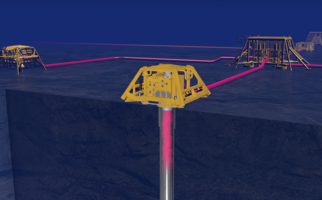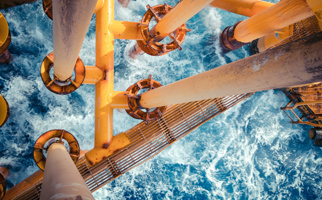
Today’s Operations
Bacton Project initial injection possible by 2030, with 5 Mtpa in phase-1 and expansions up to ~10 Mtpa in phase-2 of the project. The site storage capacity is 270 Mt1
Bacton Compression Station connected through new pipelines from local industrial clusters (incl. new Bacton Energy Hub and Great Yarmouth CCGT2) and shipping routes or offshore pipeline from Isle of Grain and European continent
CO2 will be transported through sealine from Bacton to Hewett Reservoir.
Project milestones
Aug. 2023: Receipt of Appraisal and Storage Licence CS008
Partners
In Sept. '22, Eni announced the launch of the Bacton Thames Net Zero (BTNZ) Cooperation Agreement, a consortium where Eni is acting as orchestrator
Main Emitters
Close to the industrial areas in East Anglia and Thames Estuary regions, and the European Continent
Eni has already executed non-binding agreements with 13 local industrial emitters (e.g. cement production, waste to energy, hydrogen production etc.), corresponding to ~10 Mtpa
Bacton: First injection possible by 2030, to enable 5 Mtpa in phase-1 and 10 Mtpa in phase-2.
| Project start up | First injection (If regulatory framework allows) | Mtpa in phase-1 |
|---|---|---|
|
By 2035 |
5 |
Future Strategy
Bacton project is strategically located and well positioned to benefit from the next wave of CCS UK developments. The project can: enable low carbon hydrogen production consistent with the NSTA-supported Bacton Energy Hub concept; and capture significant emissions from the SE UK and East Anglia regions, while having existing infrastructure to attract European CO2 imports at competitive costs.
Note: 1 Estimated Ultimate Storage (EUS)–Estimated based on a storage plan and static and dynamic modelling; 2 CCGT= combined-cycle gas turbine
TBC


